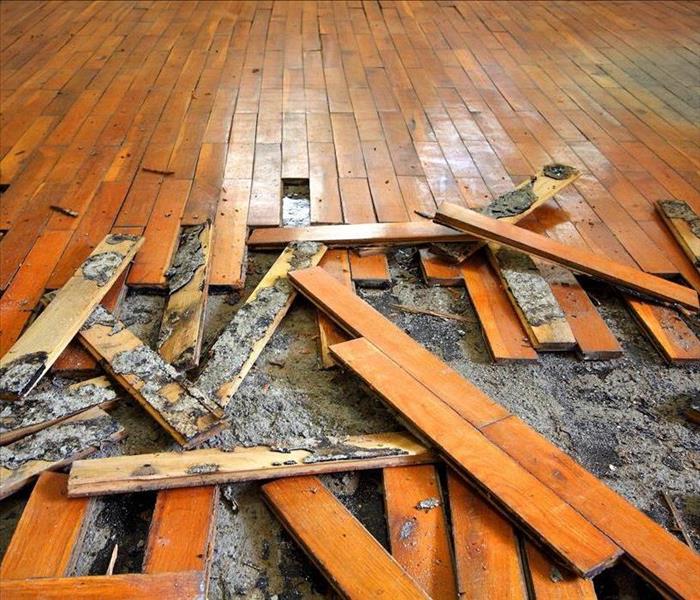6 Steps to Preserve Wood Floors from Water Damage
7/26/2022 (Permalink)
Steps To Help Prevent Long-Term Damage
Wood flooring can bring a pleasing aesthetic to your Troup, TX, business. While durable and long-lasting, it does have a weak point: water. If your business experiences a pipe burst, the wood floor will rapidly begin to absorb the water. If left unchecked, it can quickly lead to staining, cupping, buckling, and cracking, which could mean costly repairs. Below are steps to help prevent long-term damage.
1. Removed Saturated Items
The moment you notice a wet floor, quick action is necessary. Immediately remove any rugs or furniture. Leaving them in place will result in more moisture being absorbed in the floor, as well as increase the chances of mold or mildew growth.
2. Soak Up the Water
Use whatever you have on hand to soak up as much water as possible. The longer standing water remains, the more chances your floor will be damaged. It is important to consider the type of water. If there is any potential for contaminants, extra safety precautions should be taken.
3. Clean the Floor
Any debris or dirt left in the pores of wood flooring can store bacteria. Disinfecting the entire surface can help eradicate that potential problem.
4. Dry It Out
After a pipe bursts, open windows and fans can become your best friend. Increased airflow is essential for wood to dry out.
5. Perform a Moisture Test
Testing meters are available that display moisture levels. Depending on the extent of the damage and humidity levels, it could take weeks for the floor to completely dry.
6. Get Professional Help
Anytime your business faces excess water, it is worth contacting a water and mold damage expert. Along with ensuring your wood floors are properly cleaned and dried, they will be able to locate any hidden water damage that may have made its way into the walls or under the floor.
While a pipe burst is a massive hassle, taking quick action is imperative to avoid long-term damage.



 24/7 Emergency Service
24/7 Emergency Service
